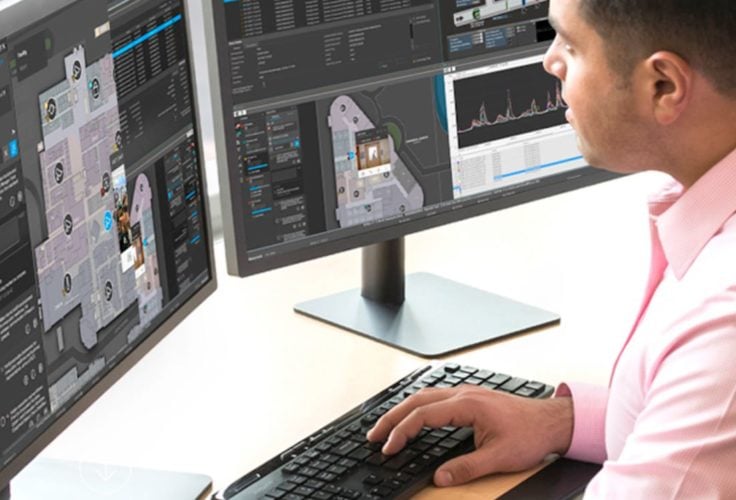Honeywell Enterprise Integrator Manual
MINNEAPOLIS, June 1, 2016 –Honeywell (NYSE: HON) today announced a new release of its leading building management system, Enterprise Buildings Integrator (EBI). EBI R500 leverages the connectivity of today’s buildings to help make them strategic assets to organizations. The new features help facility managers better streamline management and decision-making, promoting improved business efficiencies and providing greater control over operations. EBI R500 improves facility managers’ ability to turn building data into actionable insights to deliver real outcomes in real time. New features include:. Increased data point capacity – EBI performance improvements have increased point capacity by 200 percent, helping increase overall building connectivity while reducing IT costs with fewer EBI servers required.
Facility managers can gain more granular levels of building data such as room temperatures, humidity levels, air quality, access control points and video surveillance feeds. Enhanced IT Compliance – EBI is now compatible with the latest Microsoft Windows® operating system and Windows 2012 Server, promoting up-to-date IT compliance and security.
Cloud and Mobile Connectivity – EBI features a new mobile application that provides facility managers with greater situational awareness of building performance and operations. Facility managers can now receive push notifications to their smartphones and tablet devices on possible building system and equipment issues before system failures or disruptions to the organization’s operation. The mobile app also allows for remote access to and management of building systems and data. Additionally, EBI is cloud enabled and can connect with a range of Honeywell cloud services, some of which analyze facility data and facilitate decisions on improving building performance and reducing energy costs. “Buildings don’t have to be depreciating assets. With the right building management system in place, organizations can transform their buildings into intelligent contributors to organizational missions,” said John Rajchert, president, Honeywell Building Solutions.
“The latest EBI features arm organizations with tools to help turn complex data into real-time business outcomes that can mean reduced operating costs, better occupant experiences and improved occupant safety.” Honeywell EBI is an award-winning building management system that facilitates the integration of systems relating to security, comfort, life safety and energy control, among other functions. It gives users a single point of access and consistent view of information and resources through a seamless “Integration of Things” that enhances a user’s ability to monitor, manage and protect a facility, campus or multi-site operation. In addition, EBI communicates with industry-leading open protocols like BACNet®, OPC®and LonWorks®, which helps customers integrate with third-party software and hardware and benefit from the scalability and flexibility that come with an interoperable architecture. More than 25,000 EBI systems have been deployed in more than 160 countries over the last decade. Current customers can easily migrate to the latest release, providing them with the new functionality, as well as continued returns on their investment. For more information, visit or follow HoneywellBuild on Twitter.
MINNEAPOLIS, March 12, 2014 Honeywell (NYSE:HON) has updated its flagship building management system, (EBI), enabling facility personnel to view and enhance core building technology with greater ease and precision. EBI R430 helps improve efficiency, and reduce energy and operational costs by simplifying setup, scheduling and control. New features include a more robust automation engine, comprehensive mobile access and a redesigned user interface designed to accelerate both routine and advanced tasks. The latest version of EBI addresses the growing trend of smart, integrated buildings facilities where automated systems are merged and managed across the enterprise network.
This provides an enhanced and more comprehensive view of all equipment and activity, which helps boost productivity every day and deliver savings over the life of a building. According to the U.S. General Services Administration, a smart building can trim energy use up to 14 percent and raise operational efficiency as much as 12 percent. As a result, more than a quarter of the facility construction and retrofit projects Honeywell leads now involve some level of integration, a five-fold increase over the last decade. And EBI is the engine that provides the necessary interface and intelligence.
'We've seen the long-term value of integrated systems and have relied on EBI to extract those savings,' said Paul Greenwood, manager of security and safety at St. Michael's Hospital in Toronto. 'The new release has only amplified the benefits.
The automation engine is more powerful, allowing us to program access cards two to three times faster, for example. These efficiencies are important given the volume of related requests we have to process every day.' The recent upgrades to EBI center on:. Improved integration EBI is now compatible with many common Web services to provide facility managers and IT staff with new ways to customize how building systems import and mine data, and synthesize the information into actionable recommendations. Increased efficiency Facility managers can program and coordinate facility-wide systems including HVAC, lighting, security and life safety in minutes using the revamped automation engine and scheduling. Enhanced mobility Operators can continue to use smartphones for remote access and management, but can now implement tablet-based connectivity, which replicates the user interface of an EBI workstation and provides access to all building information, such as system status and trend data that can help optimize energy use in real time.

Intuitive interface While the basic layout and navigation remain, the new software incorporates features common to consumer applications, such as drag-and-drop interaction, that make day-to-day tasks and training easier. 'Facility management is no longer just about maintaining a physical structure,' said Paul Orzeske, president of Honeywell Building Solutions. 'The building is now tied to the success of the business it houses. EBI heightens awareness and efficiency, giving operators broader access to the data and tools they need to make lasting improvements changes that can impact profitability.'
Honeywell EBI is an award-winning building management system that facilitates the integration of security, comfort, life safety and energy control, among other functions. It gives users a single point of access and consistent view to information and resources that enhance the ability to monitor, manage and protect a facility, campus or multi-site operation. In addition, EBI communicates with industry-leading open protocols like BACNet®, OPC® and LonWorks®, which helps customers integrate with third-party software and hardware, and benefit from the scalability and flexibility that come with an interoperable architecture. More than 20,000 EBI systems have been deployed in more than 160 countries over the last decade. Current customers can easily migrate to the latest release, providing them with the new functionality, as well as continued returns on their investment. For more information:. Honeywell ( ) is a Fortune 100 diversified technology and manufacturing leader, serving customers worldwide with aerospace products and services; control technologies for buildings, homes and industry; turbochargers; and performance materials.
Based in Morris Township, N.J., Honeywell's shares are traded on the New York, London, and Chicago Stock Exchanges. For more news and information on Honeywell, please visit. Honeywell Building Solutions is part of the Honeywell Automation and Control Solutions business group, a global leader in providing product and service solutions that improve efficiency and profitability, support regulatory compliance, and maintain safe, comfortable environments in homes, buildings and industry. For more information:. This release contains certain statements that may be deemed 'forward-looking statements' within the meaning of Section 21E of the Securities Exchange Act of 1934. All statements, other than statements of historical fact, that address activities, events or developments that we or our management intends, expects, projects, believes or anticipates will or may occur in the future are forward-looking statements.
Wso2 Enterprise Integrator

Such statements are based upon certain assumptions and assessments made by our management in light of their experience and their perception of historical trends, current economic and industry conditions, expected future developments and other factors they believe to be appropriate. The forward-looking statements included in this release are also subject to a number of material risks and uncertainties, including but not limited to economic, competitive, governmental, and technological factors affecting our operations, markets, products, services and prices.
Sheet Metal Stamping Dies & Processes. Training Objectives After watching the program and reviewing this printed material, the viewer will gain knowledge and. DV03PUB18 Study Guide - Free download as PDF File (.pdf), Text File (.txt) or read. The mechanical cutting of large sheets of metal into smaller pieces of. Study guide for Sheet metal shop practice [Robert L Reinsch] on Amazon.com. *FREE* shipping on qualifying offers. Sheet Metal Aptitude Test – Online Preparation. Each local Sheet Metal Workers Union presents a unique aptitude test. You will not find a pre-apprenticeship aptitude test that requires the knowledge of sheet metal work experience.  Start studying Sheet metal study guide. Learn vocabulary, terms, and more with flashcards, games, and other study tools.
Start studying Sheet metal study guide. Learn vocabulary, terms, and more with flashcards, games, and other study tools.

Honeywell Enterprise Building Integrator Manual
Such forward-looking statements are not guarantees of future performance, and actual results, developments and business decisions may differ from those envisaged by such forward-looking statements.